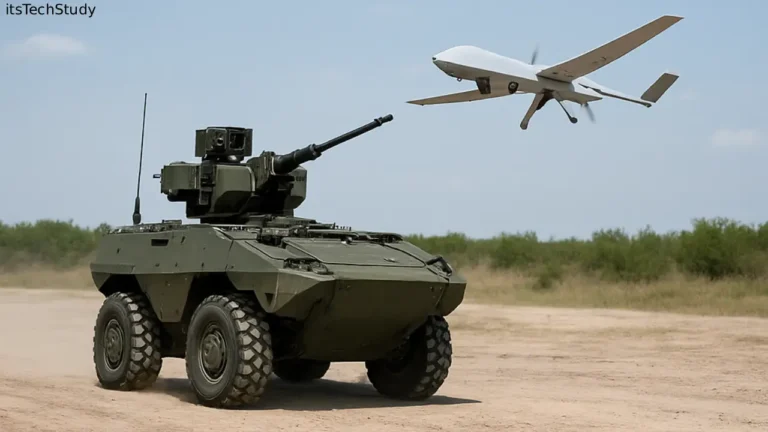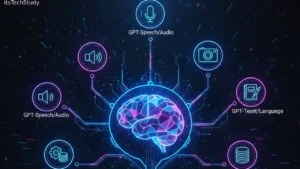Introduction: Why TensorFlow Matters in Today’s AI-Driven World
Machine learning isn’t just a buzzword anymore – it’s the backbone of modern technology. From personalized recommendations on Netflix and YouTube to self-driving cars and real-time translation apps, machine learning powers almost every aspect of digital life. But behind these innovations lies a complex ecosystem of tools and frameworks – and TensorFlow sits at the heart of it.
Developed by Google Brain, TensorFlow is an open-source machine learning framework that enables developers, data scientists, and AI engineers to build, train, and deploy intelligent models efficiently. What makes TensorFlow so powerful is its flexibility – it works seamlessly for beginners and scales up for professionals running large AI systems.
In this guide, we’ll explore how to use TensorFlow for machine learning, step-by-step. Whether you’re just starting out or looking to sharpen your AI skills, this article will help you build confidence in using TensorFlow to create your own smart models.
What is TensorFlow?
TensorFlow is an open-source deep learning and machine learning library created by Google. It allows you to develop, train, and deploy machine learning models on a wide range of devices – from servers to smartphones.
At its core, TensorFlow uses data flow graphs – structures that map how data moves through computational nodes. This makes it easier to visualize and manage large-scale machine learning models.
Key Features of TensorFlow
- Open-source and free to use
- Cross-platform compatibility (runs on CPU, GPU, and TPU)
- Supports deep learning and neural networks
- Scalable from research to production
- Large community and extensive documentation
Why Learn TensorFlow in 2025?
With the world moving rapidly toward AI automation and generative intelligence, TensorFlow continues to play a major role in powering real-world applications.
Here’s why learning it now is an investment in your future:
- Industry standard for AI frameworks – Trusted by Google, Intel, and IBM.
- Massive job opportunities – Machine learning engineers and TensorFlow developers are in high demand.
- Cross-discipline use cases – From healthcare to finance, TensorFlow applications are everywhere.
- Integration with Python – TensorFlow’s close integration with Python makes it beginner-friendly.
- Rich ecosystem – TensorFlow offers add-ons like TensorFlow Lite (for mobile) and TensorFlow.js (for web).
Setting Up TensorFlow: Step-by-Step Installation Guide
Before building models, you need to install TensorFlow properly. Follow these steps:
1. Check Your System Requirements
- Operating System: Windows, macOS, or Linux
- Python Version: 3.8 or above
- Pip Package Manager: Installed and updated
2. Install TensorFlow Using Pip
Open your terminal or command prompt and run:
pip install tensorflow
For GPU support (faster training):
pip install tensorflow-gpu
3. Verify Installation
After installation, open Python and type:
import tensorflow as tf
print(tf.__version__)
If it prints a version number (like 2.16.0), you’re all set!
Understanding TensorFlow Architecture
TensorFlow’s architecture may seem complex at first, but understanding its core components simplifies the learning curve.
| Component | Description | Purpose |
|---|---|---|
| Tensor | Multi-dimensional array (similar to NumPy array) | Holds data like weights, features, or inputs |
| Computation Graph | Network of operations | Represents how data flows and transforms |
| Session (deprecated in v2) | Executes operations | Replaced by eager execution in TensorFlow 2.x |
| Keras API | High-level interface | Simplifies model building and training |
| TensorBoard | Visualization tool | Helps analyze model performance and metrics |
Building Your First Machine Learning Model in TensorFlow
Let’s walk through a simple project: predicting housing prices based on features like area, number of rooms, and location.
Step 1: Import Required Libraries
import tensorflow as tf
from tensorflow import keras
import numpy as npStep 2: Prepare the Dataset
For simplicity, use a small dataset:
X = np.array([1000, 1500, 2000, 2500, 3000], dtype=float)
Y = np.array([150, 200, 250, 300, 350], dtype=float)
Step 3: Build the Model
model = keras.Sequential([keras.layers.Dense(units=1, input_shape=[1])])
Step 4: Compile the Model
model.compile(optimizer='sgd', loss='mean_squared_error')
Step 5: Train the Model
model.fit(X, Y, epochs=500)
Step 6: Test the Model
print(model.predict([4000.0]))
Congratulations! You’ve just built your first TensorFlow regression model.
Pros and Cons of TensorFlow
| Pros | Cons |
|---|---|
| Powerful and scalable for production | Steeper learning curve for beginners |
| Large community and documentation | Complex syntax compared to PyTorch |
| Works on multiple platforms | Debugging can be difficult |
| Integrated with Keras for simplicity | Slower updates in older versions |
Common Use Cases of TensorFlow
TensorFlow isn’t limited to just one application. Here’s where it shines:
1. Computer Vision
Used for image classification, object detection, and facial recognition.
2. Natural Language Processing (NLP)
Powers chatbots, translation models, and sentiment analysis tools.
3. Speech Recognition
Used in smart assistants like Google Assistant and Alexa.
4. Healthcare Analytics
Detects diseases using medical imaging and predictive analytics.
5. Financial Forecasting
Helps banks and businesses predict trends and minimize risk.
TensorFlow vs Other ML Frameworks
| Feature | TensorFlow | PyTorch | Scikit-Learn |
|---|---|---|---|
| Ease of Use | Moderate (via Keras) | Easy | Very Easy |
| GPU Support | Excellent | Excellent | Limited |
| Deployment Options | Broad (mobile, web, cloud) | Good | Basic |
| Best For | Deep Learning, AI at scale | Research, Prototyping | Traditional ML |
| Community Support | Very Large | Large | Moderate |
Best Practices for Using TensorFlow Efficiently
- Start with Keras API – It simplifies model building with less code.
- Use TensorBoard – Track metrics and visualize performance.
- Leverage TensorFlow Datasets (TFDS) – Access ready-to-use data.
- Enable GPU acceleration – Greatly speeds up training.
- Experiment with different optimizers – Try Adam, RMSprop, or SGD.
- Regularize your model – Prevent overfitting using dropout or L2 regularization.
- Save and reload models – Use
model.save()andkeras.models.load_model()for deployment.
Tips for Beginners Learning TensorFlow
- Start small – focus on basic regression or classification tasks.
- Read TensorFlow documentation frequently; it’s well-maintained.
- Join the TensorFlow community on GitHub or Reddit.
- Practice using Google Colab – free GPU access is perfect for training.
- Watch your model’s learning curve; tweak hyperparameters when needed.
Conclusion: Building the Future with TensorFlow
TensorFlow is more than just a tool – it’s a gateway into the world of artificial intelligence. By learning how to use it, you gain the power to turn data into intelligent predictions, automate decision-making, and innovate across industries.
From simple regression models to cutting-edge neural networks, TensorFlow makes machine learning accessible to everyone – whether you’re a student, engineer, or tech entrepreneur.
So take the first step: install TensorFlow, experiment with small projects, and keep exploring. In the age of AI, TensorFlow isn’t just a framework – it’s your bridge to the future of intelligent technology.
Frequently Asked Questions (FAQs)
Q1: Is TensorFlow good for beginners?
Ans: Yes. Thanks to the integrated Keras API, TensorFlow is beginner-friendly while still powerful enough for experts.
Q2: What programming language is used with TensorFlow?
Ans: TensorFlow primarily uses Python, but it also supports C++, JavaScript (TensorFlow.js), and Swift.
Q3: Can I use TensorFlow without a GPU?
Ans: Absolutely. TensorFlow can run on CPUs, though GPUs significantly speed up training for deep learning models.
Q4: How does TensorFlow compare to PyTorch?
Ans: TensorFlow excels in production and deployment, while PyTorch is often preferred for research and experimentation.
Q5: Is TensorFlow free to use?
Ans: Yes. TensorFlow is completely open-source and free, backed by Google’s strong community support.
Q6: What are the career prospects for TensorFlow developers?
Ans: Extremely strong. Skills in TensorFlow and machine learning are among the top-paying and most in-demand in tech today.












No Comments Yet
Be the first to share your thoughts.
Leave a Comment